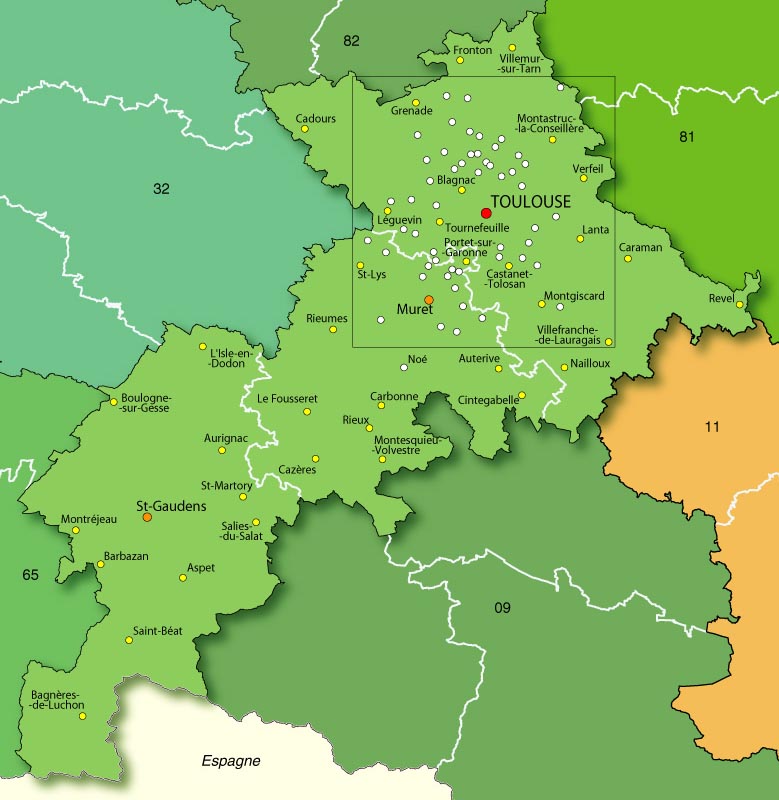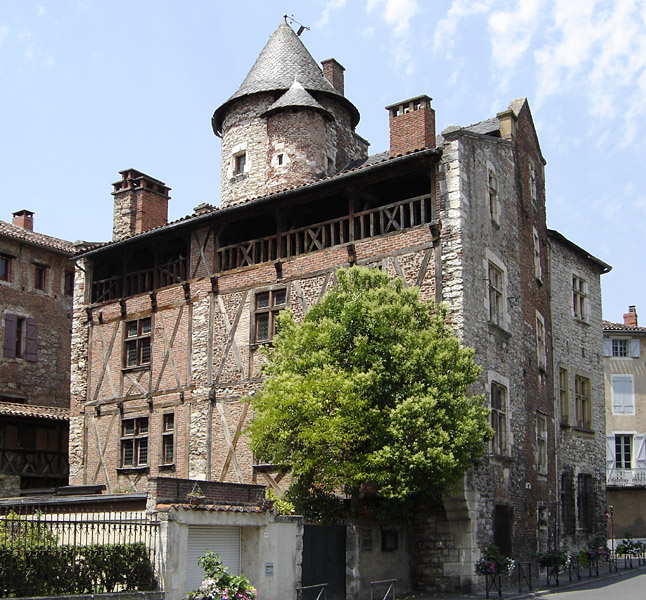|
Saint-Rustice
Saint-Rustice (; oc, Sent Rostesi) is a commune in the Haute-Garonne department in southwestern France. History Saint-Rustice is famous for its ancient Roman mosaics which were discovered in 1833. The city takes its name from Rusticus, a bishop of Cahors, who was murdered in 630. Population Sights (Toulouse) Nymphe appelée Ino ou Dotô Saint-Rustice - Musée Saint-Raymond Ra 20b.jpg, Gallo-Roman mosaic Saint-Rustice La Mairie.jpg, Town Hall Saint-Rustice L'église St Pierre.jpg, St. Peter Church (Saint-Rustice) - Le Monument aux morts.jpg, War memorial See also *Communes of the Haute-Garonne department The following is a list of the 586 communes of the French department of Haute-Garonne. The communes cooperate in the following intercommunalities (as of 2020): [...More Info...] [...Related Items...] OR: [Wikipedia] [Google] [Baidu] |
Communes Of The Haute-Garonne Department
The following is a list of the 586 communes of the French department of Haute-Garonne. The communes cooperate in the following intercommunalities (as of 2020):BANATIC Périmètre des EPCI à fiscalité propre. Accessed 3 July 2020. * *CA * * [...More Info...] [...Related Items...] OR: [Wikipedia] [Google] [Baidu] |
Communes Of France
The () is a level of administrative division in the French Republic. French are analogous to civil townships and incorporated municipalities in the United States and Canada, ' in Germany, ' in Italy, or ' in Spain. The United Kingdom's equivalent are civil parishes, although some areas, particularly urban areas, are unparished. are based on historical geographic communities or villages and are vested with significant powers to manage the populations and land of the geographic area covered. The are the fourth-level administrative divisions of France. vary widely in size and area, from large sprawling cities with millions of inhabitants like Paris, to small hamlets with only a handful of inhabitants. typically are based on pre-existing villages and facilitate local governance. All have names, but not all named geographic areas or groups of people residing together are ( or ), the difference residing in the lack of administrative powers. Except for the municipal arrondi ... [...More Info...] [...Related Items...] OR: [Wikipedia] [Google] [Baidu] |
Haute-Garonne
Haute-Garonne (; oc, Nauta Garona, ; en, Upper Garonne) is a department in the Occitanie region of Southwestern France. Named after the river Garonne, which flows through the department. Its prefecture and main city is Toulouse, the country's fourth-largest. In 2019, it had a population of 1,400,039.Populations légales 2019: 31 Haute-Garonne INSEE History Haute-Garonne is one of the original 83 departments created during the on 4 March 1790. It was created from part of the former provinces of an ...[...More Info...] [...Related Items...] OR: [Wikipedia] [Google] [Baidu] |
Departments Of France
In the administrative divisions of France, the department (french: département, ) is one of the three levels of government under the national level ("territorial collectivities"), between the administrative regions and the communes. Ninety-six departments are in metropolitan France, and five are overseas departments, which are also classified as overseas regions. Departments are further subdivided into 332 arrondissements, and these are divided into cantons. The last two levels of government have no autonomy; they are the basis of local organisation of police, fire departments and, sometimes, administration of elections. Each department is administered by an elected body called a departmental council ( ing. lur.. From 1800 to April 2015, these were called general councils ( ing. lur.. Each council has a president. Their main areas of responsibility include the management of a number of social and welfare allowances, of junior high school () buildings and technical staff, ... [...More Info...] [...Related Items...] OR: [Wikipedia] [Google] [Baidu] |
France
France (), officially the French Republic ( ), is a country primarily located in Western Europe. It also comprises of Overseas France, overseas regions and territories in the Americas and the Atlantic Ocean, Atlantic, Pacific Ocean, Pacific and Indian Oceans. Its Metropolitan France, metropolitan area extends from the Rhine to the Atlantic Ocean and from the Mediterranean Sea to the English Channel and the North Sea; overseas territories include French Guiana in South America, Saint Pierre and Miquelon in the North Atlantic, the French West Indies, and many islands in Oceania and the Indian Ocean. Due to its several coastal territories, France has the largest exclusive economic zone in the world. France borders Belgium, Luxembourg, Germany, Switzerland, Monaco, Italy, Andorra, and Spain in continental Europe, as well as the Kingdom of the Netherlands, Netherlands, Suriname, and Brazil in the Americas via its overseas territories in French Guiana and Saint Martin (island), ... [...More Info...] [...Related Items...] OR: [Wikipedia] [Google] [Baidu] |
Rusticus (bishop Of Cahors) , 2 ...
Rusticus is a Latin adjective meaning "rural, simple, rough or clownish" and can refer to: Animals * '' Aedes rusticus'', a European mosquito * Rusty crayfish (''Orconectes rusticus'') * '' Urozelotes rusticus'', a ground spider * a synonym of the butterfly genus '' Plebejus'' People Saints and martyrs *Saint Rusticus of Narbonne (died c. 461) * Saint Rusticus (Archbishop of Lyon) (c. 455–501) * One of the martyred companions of Saint Denis (3rd century) * Martyr of Verona (died c. 290): see Firmus and Rusticus Other people *Fabius Rusticus, 1st-century historian of ancient Rome * Arulenus Rusticus, (c. 35–93 AD) consul executed by Domitian * Flavius Rusticus Helpidius, 5th-century Latin poet *Junius Rusticus Quintus Junius Rusticus (c. 100 – c. 170 AD), was a Roman teacher and politician. He was probably a grandson of Arulenus Rusticus, who was a prominent member of the Stoic Opposition. He was a Stoic philosopher and was one of the teachers ... [...More Info...] [...Related Items...] OR: [Wikipedia] [Google] [Baidu] |
Roman Catholic Diocese Of Cahors
The Roman Catholic Diocese of Cahors (Latin: ''Dioecesis Cadurcensis''; French: ''Diocèse de Cahors'') is a diocese of the Latin Rite of the Roman Catholic Church in France. The diocese comprises the whole of the department of Lot. In the beginning it was a suffragan of the Archdiocese of Bourges, and later, from 1676 to the time of the French Revolution, it was a suffragan of the Archdiocese of Albi. From 1802 to 1822 Cahors was under the Archbishop of Toulouse, and combined the former Diocese of Rodez with a great part of the former Diocese of Vabres and the Diocese of Montauban. However, in 1822 it was restored almost to its pristine limits and again made suffragan to Albi. In the Diocese of Cahors in 2013 there was one priest for every 2,295 Catholics. History According to a tradition connected with the legend of St. Martial, this saint, deputed by St. Peter, came to Cahors in the first century and there dedicated a church to St. Stephen, while his disciple, St. ... [...More Info...] [...Related Items...] OR: [Wikipedia] [Google] [Baidu] |
Cahors
Cahors (; oc, Caors ) is a commune in the western part of Southern France. It is the smallest prefecture among the 13 departments that constitute the Occitanie Region. The main city of the Lot department and the historical center of the Quercy, Cahors is home to 19,878 ''cadurciennes'' and ''cadurciens''. Nestled in a meander of the Lot and surrounded by steep arid limestone hills, this historic city is home to a great monumental diversity, mainly inherited from Roman times and the Middle Ages; the city's monuments include a historic city centre, Saint-Étienne cathedral, Roman walls and the famous Valentré bridge (a UNESCO World Heritage Site as part of the pilgrimage path to Santiago de Compostela). Famed for its wine and gastronomy (truffles and foie gras), this southern French city holds the label of the French Towns of Art and History. The Cadurcian economy is reliant on tertiary services and makes Cahors the Lot's economic centre. History Cahors has had a rich hi ... [...More Info...] [...Related Items...] OR: [Wikipedia] [Google] [Baidu] |

